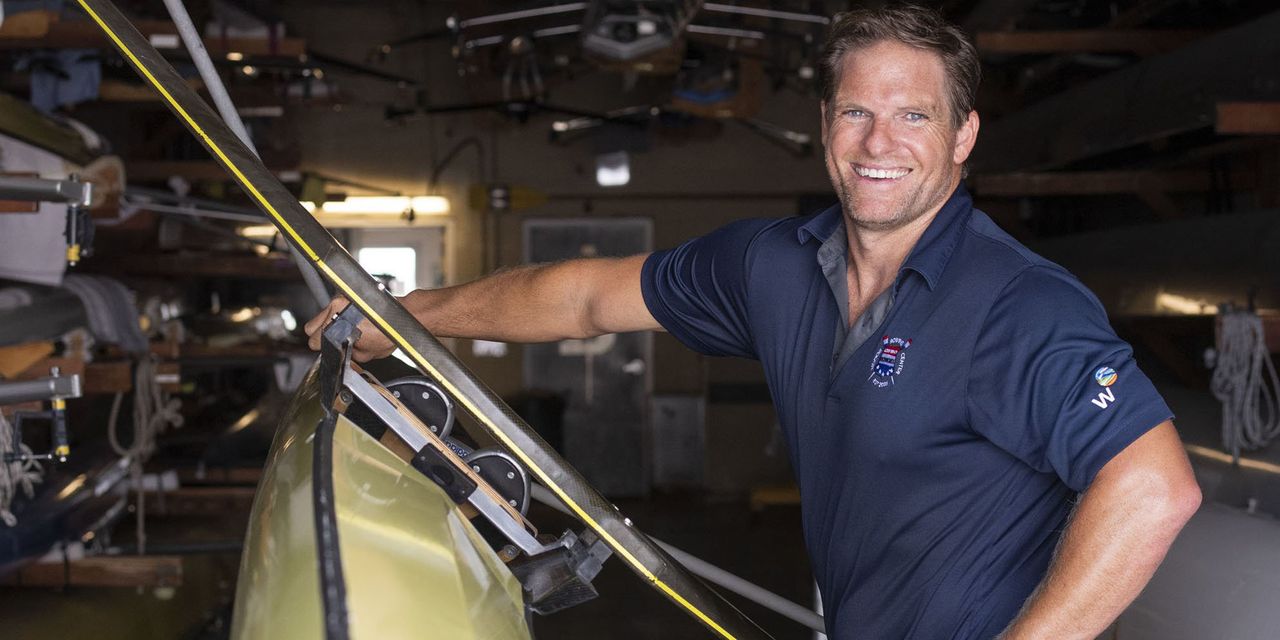Strong, powerful legs and glutes are the secret weapons of elite rowers. “A rowing workout is most closely related to a squat jump or dead lift,” says Jack Nunn, a former member of the USRowing national team and founder of Roworx Fitness in Long Beach, Calif. “Nearly 70% of the power coming from the rowing stroke is driven through the legs and back,” says Mr. Nunn, whose father, John Nunn, competed in and coached rowing in the Olympics.
The lower-body movement in the rowing stroke helps strengthen the quadriceps and hamstrings, key muscles that protect the knee joint, Mr. Nunn says. If you don’t have access to a boat or a rowing machine, he says, mimicking the lower body rowing motion on land is as simple as adding squats into your routine. “When I underwent two knee surgeries, both doctors told me to start doing standard standing squats to regain strength,” he says.
Core strength and balance also help rowers excel on the water. “We need to be able to balance a 26-foot-long boat that’s only about a foot wide while rowing backward in a straight line,” he says. His coach at the University of California, Berkeley, where Mr. Nunn rowed for four years, said rowing requires the stamina of a runner, the balance of a gymnast and the power of a Greco-Roman wrestler, all rolled into one.
To that end, Mr. Nunn likes to enhance standard exercises like the squat or lunge with resistance bands, Bosu balls and other twists, like a pillow, that challenge balance and coordination. The following exercises focus on building strength around the knee joints while also helping train balance and core stability. He suggests performing three to five sets of each with one minute of rest in between.
The Workout
Dynamic Wall Sit
Why: “Wall sits are an invaluable exercise to build overall leg strength and stability,” says Mr. Nunn. “They are a staple of sports that require leg endurance such as skiing, football, ice hockey and cycling.”













































